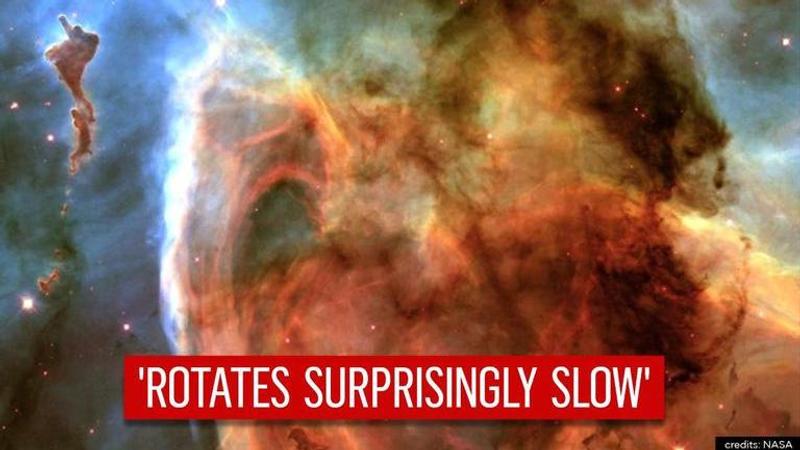Published 14:48 IST, February 3rd 2021
NASA shares stunning 'pulsar SXP 1062' imagery embedded in supernova remnant
NASA's image obtained using two special filters shows a rotating, super-dense core of SXP 1062 spinning slowly, emitting vibrant X-ray outbursts.

NASA on February 2 shared breathtaking imagery of a mystical spinning star dubbed as pulsar SXP 1062. Taking to its official Instagram account, the Space administration shared the bright galactic entity’s photograph captured by NASA’s Hubble, born out of a star that nearly exploded nearly 40,000 years ago. The image shows a rotating, super-dense core of SXP 1062 spinning slowly, emitting vibrant X-ray outbursts. The star, according to NASA, was found to be associated with supernova remnant MCSNR J0127-7332 after it was observed on RSS/SALT telescope.
“Pulsars are roughly 20 kilometers in diameter. The bright source on the right-hand side of this image is pulsar SXP 1062 and it rotates surprisingly slowly — about once every 18 minutes,” NASA explained, sharing the mesmeric photograph.
“What's the fastest pulsar known? That's PSR J1748-2446ad and it rotates 716 times per second,” furthermore, the agency informed.
According to a release by ESA, Pulsar SXP 1062 is embedded in the remnant of the supernova that created it. It accretes mass from its stellar companion, a massive, hot, blue 'Be' star, the two objects forming a Be/X-ray binary, as per the European agency. The star, known to be a cosmic mystery for scientists, has a colourful bubble-shaped signature of the supernova remnant wherein the protons and electrons are merged together to form the neutrons. NASA explained in a release, that the Pulsar’s neutrons, as humungous as a city, rotate rapidly making the vibrant light emission pulse at regular intervals, which is why the star is known as ‘Pulsar’.
Combines the X-ray view
"Not many pulsars have been observed within their supernova remnant, and this is the first clear example of such a pair in the [Small Magellanic Cloud]," study leader Vincent Hénault-Brunet, of the University of Edinburgh in the United Kingdom, said in a statement to NASA. The European Space Agency's XMM-Newton observatory had spotted the X-rays emitted by SXP 1062 that were making hundreds of revolutions per second. Internet was intrigued with the galactic entity and its interesting cosmic effect. ESA explained in a release that the false-colour image “combines the X-ray view, based on data from XMM-Newton with optical data from NOAO's Cerro Tololo Inter-American Observatory (CTIO)”. It furthermore explained that the image was obtained using two special filters that revealed Pulsar’s glow of oxygen.
Updated 14:49 IST, February 3rd 2021




